当前城市:淄博[切换]
- 手机雅思无忧

扫码登录
雅思考试主要是通过对考生听、说、读、写四个方面英语能力的考核,综合测评考生的英语沟通运用能力,实现“沟通为本的”考试理念。对于雅思考生来说,也有很多考试难点和政策盲区需要帮助解答。今天雅思无忧网小编准备了文章雅思阅读的练习:人类文字进化史,希望通过文章来解决雅思考生这方面的疑难问题,敬请关注。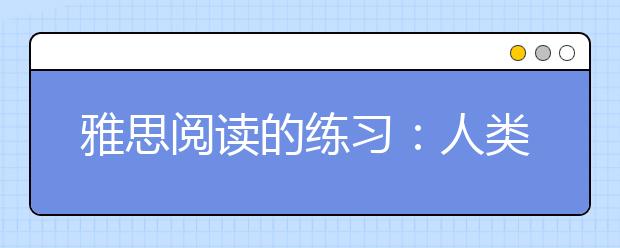
History of Writing
Writing was first invented by the Sumerians in ancient Mesopotamia before 3,000 BC. It was also independently invented in Meso-America before 600 BC and probably independently invented in China before 1,300 BC. It may have been independently invented in Egypt around 3,000 BC although given the geographical proximity between Egypt and Mesopotamia the Egyptians may have learnt writing from the Sumerians.
There are three basic types of writing systems. The written signs used by the writing system could represent either a whole word, a syllable or an individual sound. Where the written sign represents a word the system is known as logographic as it uses logograms which are written signs that represent a word. The earliest writing systems such as the Sumerian cuneiform, Egyptian hieroglyphics and Mayan glyphs are predominantly logographics as are modern Chinese and Japanese writing systems. Where the written sign represents a syllable the writing system is known as syllabic. Syllabic writing systems were more common in the ancient world than they are today. The Linear A and B writing systems of Minoan Crete and Mycenaean Greece are syllabic. The most common writing systems today are alphabetical. These involve the written sign (a letter) representing a single sound (known as a phoneme). The earliest known alphabetical systems were developed by speakers of semetic languages around 1700 BC in the area of modern day Israel and Palestine. All written languages will predominately use one or other of the above systems. They may however partly use the other systems. No written language is purely alphabetic, syllabic or logographic but may use elements from any or all systems.
Such fully developed writing only emerged after development from simplier systems. Talley sticks with notches on them to represent a number of sheep or to record a debt have been used in the past. Knotted strings have been used as a form of record keeping particularly in the area around the Pacific rim. They reached their greatest development with the Inca quipus where they were used to record payment of tribute and to record commercial transactions. A specially trained group of quipu makers and readers managed the whole system. The use of pictures for the purpose of communication was used by native Americans and by the Ashanti and Ewe people in Africa. Pictures can show qualities and characteristics which can not be shown by tally sticks and knot records. They do not however amount to writing as they do not bear a conventional relationship to language. Even so, the Gelb dictum (from its originator Ignace Gelb), that “At the basis of all writing stands the picture” has been widely accepted.
An alternative idea was that a system by which tokens, which represented objects like sheep, were placed in containers and the containers were marked on the outside indicating the number and type of tokens within the container gave rise to writing in Mesopotamia. The marks on the outside of the container were a direct symbolic representation of the tokens inside the container and an indirect symbolic representation of the object the token represented. The marks on the outside of the containers were graphically identical to some of the earliest pictograms used in Sumerian cuneiform, the worlds first written language. However cuneiform has approximately 1,500 signs and the marks on the ouside of the containers can only explain the origins of a few of those signs.
The first written language was the Sumerian cuneiform. Writing mainly consisted of records of numbers of sheep, goats and cattle and quantites of grain. Eventually clay tablets were used as a writing surface and were marked with a reed stylus to produce the writing. Thousands of such clay tablets have been found in the Sumerian city of Uruk. The earliest Sumerian writing consists of pictures of the objects mentioned such as sheep or cattle. Eventually the pictures became more abstract and were to consist of straight lines that looked like wedges
雅思考前能力水平测试(0元领课)
以上就是雅思无忧网为您准备的访问雅思无忧网(https://www.yasi.cn/),了解更多雅思考试新消息,新动态。
 雅思阅读扫读练习方法
雅思阅读扫读练习方法
对于雅思的学习,很多学员学习起来还是有一点困难的,特别是阅读阶段,为了大家更好的进行雅思阅读,今天小
2021年05月26日 13:25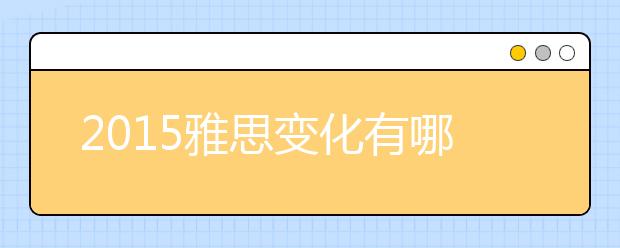 2019雅思变化有哪些?2019雅思阅读与写作预测
2019雅思变化有哪些?2019雅思阅读与写作预测
2019年的雅思考试已经过去了两个月,在这两个月内,我们依然可以大胆的预测出2019雅思变化有哪些。
2021年05月27日 22:36 雅思考前指南——雅思阅读相关的备考建议
雅思考前指南——雅思阅读相关的备考建议
雅思考前指南——雅思阅读相关的备考建议为大家带来雅思阅读的考点题型全解析和在备考过程中可能出现的疑难
2021年05月28日 18:20 2019雅思考试注意事项全解析 附雅思阅读听力评分标准
2019雅思考试注意事项全解析 附雅思阅读听力评分标准
雅思考试跟国内考试在内容和考核方式上有很多的不同,即是在考试的注意事项上,也有很多独特的地方,大家须
2021年05月28日 22:16 雅思阅读评分标准及分数解读 附20组必背阅读替换词清单
雅思阅读评分标准及分数解读 附20组必背阅读替换词清单
本文为大家带来2019年雅思阅读评分标准表及9-0分的各个分数段的分数解读,看看你的阅读水平目前处于
2021年05月28日 22:21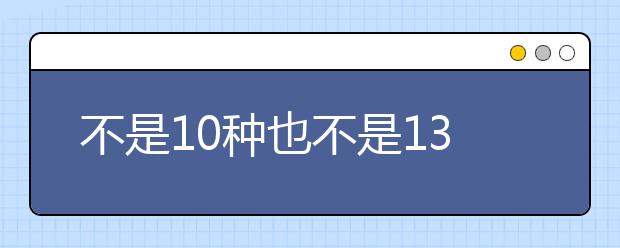 不是10种也不是13种 简明讲解雅思阅读5大题型特征及解法
不是10种也不是13种 简明讲解雅思阅读5大题型特征及解法
雅思阅读题型多样,各有各的难点和特点。若能突破其难点,掌握其特点,对在规定时间内完成题目并保证正确率
2021年05月29日 00:42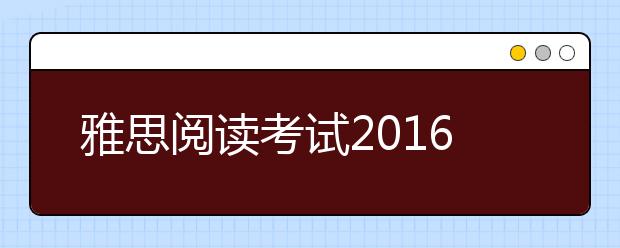 雅思阅读考试2019最新评分标准与复习方法讲解
雅思阅读考试2019最新评分标准与复习方法讲解
雅思阅读考试,其实算是中国烤鸭们的重头戏,因为我们都是从高考,大学四六级甚至考研的大量阅读理解题目里
2021年05月29日 06:23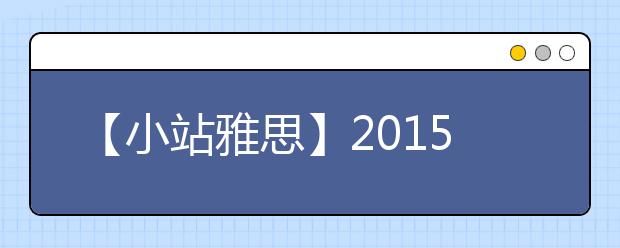 【小站雅思】2019年下半年雅思阅读趋势分析
【小站雅思】2019年下半年雅思阅读趋势分析
综合2019年上半年的考试情况看,雅思阅读文章题材平稳,但是题型与文章内容的融合度在逐渐增高,总体难
2021年05月29日 11:19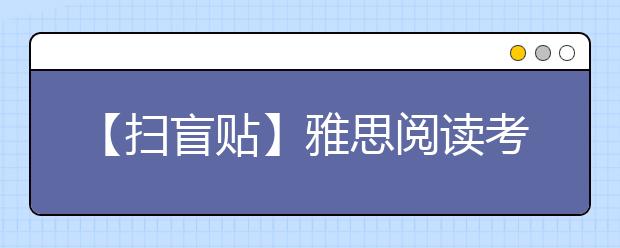 【扫盲贴】雅思阅读考试简要介绍
【扫盲贴】雅思阅读考试简要介绍
雅思考试一共分为四个考核部分,包括听说读写四个单项。在此,小站教育针对雅思阅读考试,给大家做一个简要
2021年05月30日 12:39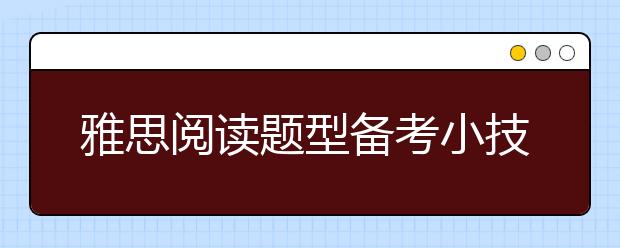 雅思阅读题型备考小技巧
雅思阅读题型备考小技巧
在雅思的阅读考试中,阅读题型有很多种类型,不同类型的题目有不同的解题方法,七分雅思网小编为大家整理了
2021年06月01日 16:23